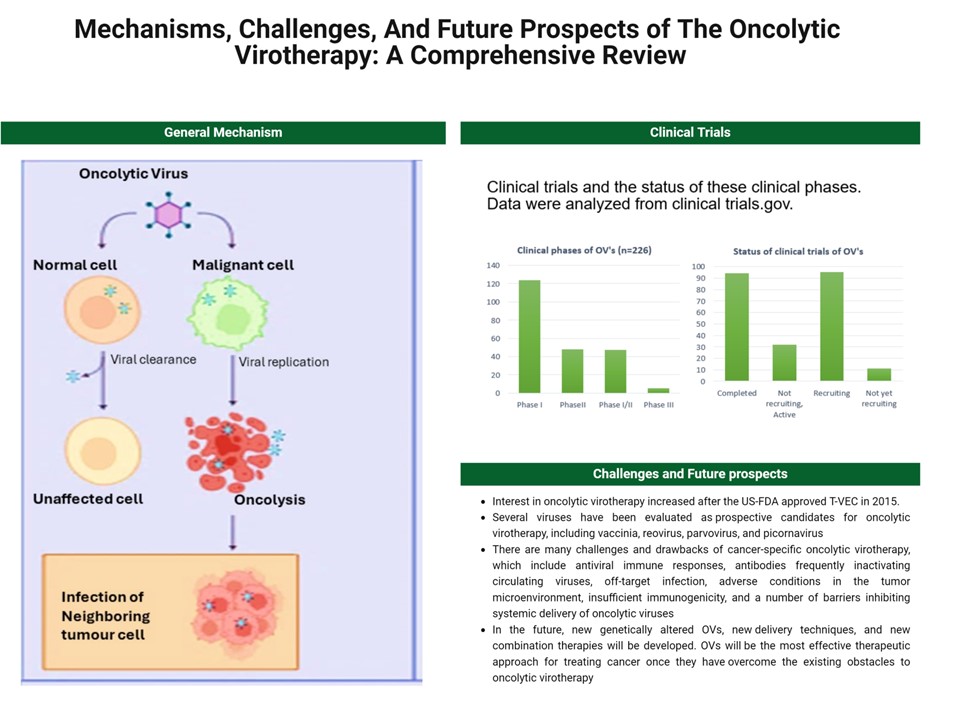Mechanisms, challenges and future prospects of the oncolytic virotherapy: a comprehensive review
Keywords:
Cancer, Cancer therapy, Clinical trials, Oncolytic viruses, VirotherapyAbstract
Oncolytic viruses (OVs) are a promising cancer-fighting agent that has gained widespread attention due to recent advances in virology and molecular biology. These viruses selectively infect and multiply inside tumor cells, causing them to rupture and release newly synthesized viruses that stimulate the body's immune system to target the tumor cells. Clinical investigations have shown that OVs can effectively eliminate cancer cells that are resistant to traditional treatments, which is why over 100 clinical trials are currently exploring the possibility of combining them with other therapies for better efficacy. Although OVs have demonstrated enormous potential, their effectiveness in treating solid tumors is still limited. Therefore, researchers are continuously developing new viral families that can exclusively replicate in tumor cells. Currently, T-VEC is the only FDA-approved oncolytic virus, but with ongoing phase I-III clinical studies, more promising treatments are on the horizon. Furthermore, this review article provides a comprehensive overview of OVs, including their mechanism of action delivery routes, challenges in oncolytic virotherapy, current developments, the efficacy of OVs when combined with other cancer treatments, and prospects for future research.

Downloads
Additional Files
Published
How to Cite
License
Copyright (c) 2024 Fizza Maryam, Sana Gul

This work is licensed under a Creative Commons Attribution-NonCommercial 4.0 International License.
